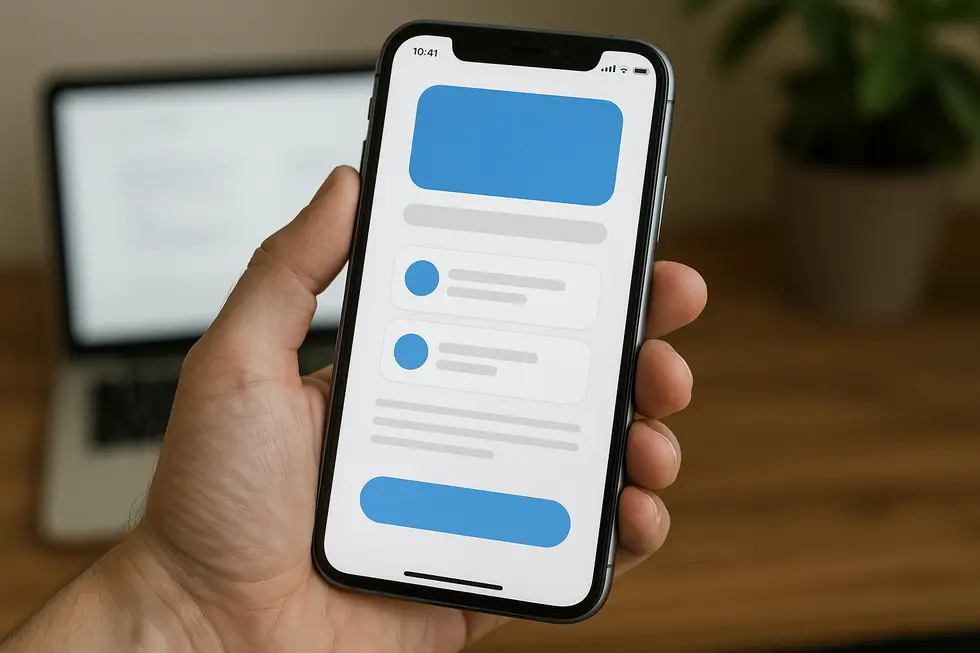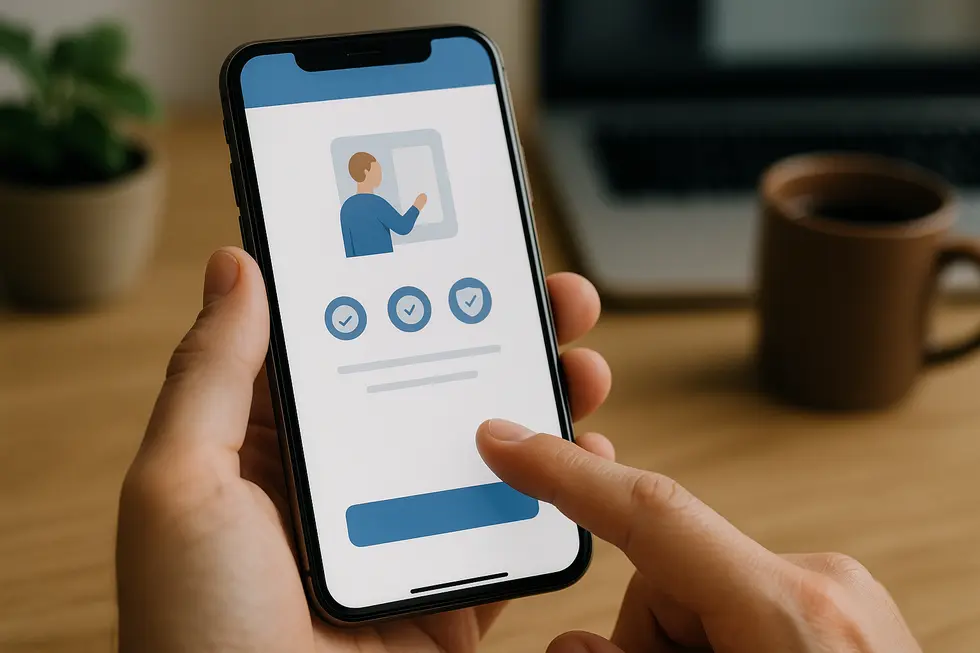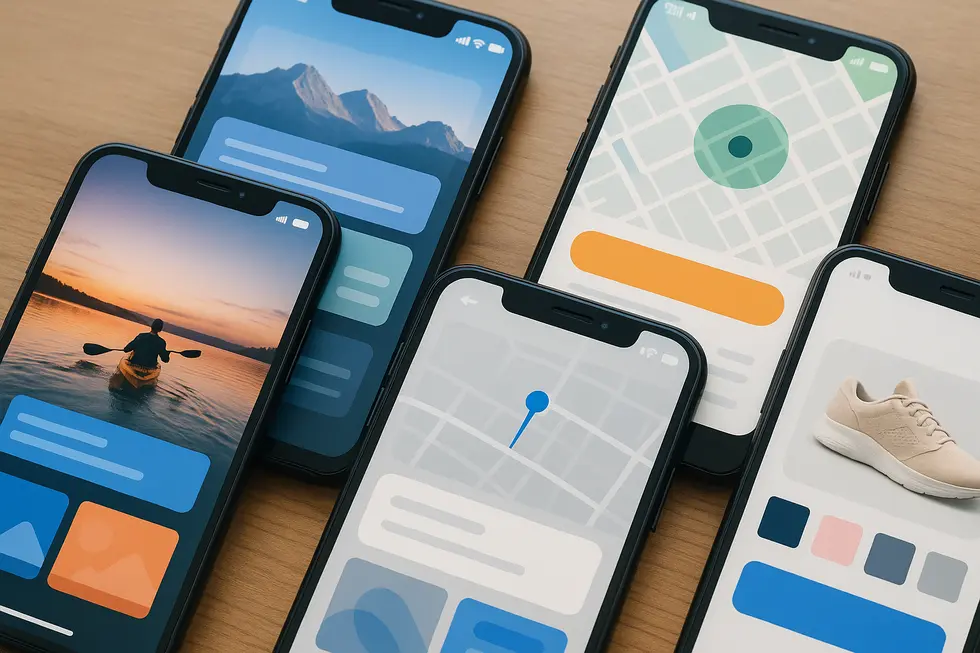Shaping User Perceptions in Seconds: How Cognitive Biases and Design Drive Your Mobile Experience

First impressions form incredibly quickly—often in seconds or less. On mobile devices, where interactions are brief and competition for attention is fierce, this rapid judgment can decide the fate of user engagement almost instantly. The subtle interplay between cognitive biases, mental models, technological fluency, and design aesthetics creates a foundation on which users build their initial opinions about an app or interface. Understanding and leveraging these factors are essential for designers aiming to craft phone experiences that not only capture attention but also foster loyalty.
Users approach mobile experiences with preconceived mental models shaped by their past interactions and cultural contexts. These mental models influence expectations about navigation, layout, and functionality. For example, a user accustomed to a minimalistic interface from their previous device may find a cluttered or counterintuitive design jarring, impacting their willingness to continue using the app. Designers who honor these mental models by aligning new experiences with familiar patterns reduce cognitive friction and create a smoother transition that feels natural to the user’s mindset.
Closely linked to these models are cognitive biases—mental shortcuts or predispositions that shape interpretation quickly and subconsciously. For instance, the halo effect causes users to generalize a favorable first impression of visual design to overall trustworthiness and usability. Conversely, if an initial glance reveals slow loading times or confusing controls, confirmation bias may reinforce negative perceptions, making users more likely to abandon the experience. Being aware of such biases allows creators to craft interfaces that trigger positive emotional responses within moments, fostering engagement through visual clarity, intuitive interaction, and reassuring cues.
Technology itself is a powerful influencer of first impressions. Seamless, fast, and personalized mobile experiences leverage the device’s capabilities to delight users. Features such as interactive elements, real-time feedback, or customized content signal sophistication and care, signaling users that the app respects their time and preferences. Such thoughtful integration elevates user satisfaction and cements a strong first impression that encourages deeper exploration.
Design plays a pivotal role in harmonizing these elements, using aesthetics and usability principles to evoke emotional resonance. Clean layouts, consistent typography, and smooth transitions create visual fluency that aligns with users’ mental models and reduces cognitive load. Encouraging positive emotions like joy, surprise, and confidence enhances retention and can convert casual users into dedicated advocates. Conversely, frustration stemming from clutter, complexity, or technical lag can repel users within seconds, damaging brand credibility and increasing bounce rates.
Ultimately, the success of a mobile phone experience hinges on how effectively it combines rapid visual appeal, mental model alignment, cognitive insight, and technological finesse. Designers who master this balance not only capture critical first impressions but also set the stage for lasting engagement and loyalty. For deeper insights on leveraging cognitive biases to enhance UX, explore this article.
How Mobile Design Shapes Instant User Perceptions and Drives Engagement

First impressions on mobile devices occur in a flash, often within seconds, and these split-second judgments can make or break a user’s connection with a brand. With mobile devices becoming the primary gateway to the internet for over 84% of users, the mobile experience plays an increasingly influential role in shaping how visitors perceive credibility and trustworthiness. When users land on a mobile website or open an app, their perception is largely dictated by the design’s clarity, usability, and speed, all combined into a seamless, intuitive experience.
Research underlines that more than three-quarters of people judge a business’s reliability based on the quality of its website design. This judgment extends strongly to mobile platforms, where expectations for simplicity and efficiency are high. A mobile design that aligns visual appeal with straightforward navigation not only invites users to stay longer but also significantly increases the likelihood of repeat visits, building loyalty in the process. Conversely, poorly optimized mobile websites tend to frustrate visitors, inflating bounce rates and damaging brand reputation.
Mobile usage is no longer limited to casual browsing; it now encompasses active engagement including shopping, banking, and productivity tasks. Data shows that conversion rates on mobile slightly edge out desktop, with 3.1% on mobile versus 2.8% on desktop, highlighting mobile devices as powerful platforms for driving real user actions. To capitalize on this potential, businesses must prioritize mobile-specific design strategies that focus on streamlined user flows, fast load times, and clear visual hierarchies that immediately communicate value.
Integral to this strategy is the design of the user interface (UI) and user experience (UX) in mobile applications. A staggering 90% of users reportedly abandon apps due to poor UI/UX design. This sharp drop-off emphasizes how crucial an intuitive and pleasurable mobile interface is for keeping users engaged. A well-executed UI/UX design anticipates user needs, minimizes effort, and creates an experience that feels natural and rewarding, which can convert fleeting first impressions into long-term user satisfaction.
User onboarding stands out as another decisive phase in the mobile experience. An effective onboarding process can quadruple the chances that a user will evolve into a devoted power user. Yet, many mobile experiences falter here, with 90% of users churning due to ineffective onboarding. When onboarding combines clear guidance with interactive and empathetic design, users feel supported and valued, setting a positive tone from the outset.
In essence, the mobile experience is a critical determinant of first impressions, trust, and engagement. It requires careful crafting of design elements, seamless technical performance, and thoughtful onboarding to turn initial visits into lasting relationships. As mobile usage trends continue to advance, mastering these elements becomes vital for any business seeking to thrive where user attention spans are fleeting but the opportunities for meaningful connection are boundless.
Source: Hostinger Tutorial on Web Design Statistics
Crafting Instant Impact: How Optimized Mobile Experiences Shape User First Impressions

First impressions on mobile devices happen in the blink of an eye—often within milliseconds—yet these fleeting moments wield tremendous power over user engagement and loyalty. Research highlights that users form immediate opinions based on the visual and functional design of mobile apps or websites, with responsiveness and clarity emerging as essential factors. When mobile experiences are finely tuned, users are far more likely to stay engaged and become dedicated customers, but poorly optimized interactions risk sending them away before meaningful connections form.
One foundational strategy to captivate users instantly is responsive design. Since mobile devices come with varying screen sizes and resolutions, a design that adapts seamlessly ensures users never feel compromised by awkward layouts or misplaced content. This flexibility not only preserves brand consistency but also supports a smooth journey across devices, reinforcing a confident first impression. Coupled with responsive frameworks, investing in dedicated mobile UI/UX becomes key. Studies reveal that 90% of users abandon apps due to poor interface or usability issues, underscoring how crucial a visually inviting and intuitive environment is. Simplicity in navigation, legible typography, and thoughtful visual hierarchy collectively create a user-friendly atmosphere that draws attention without overwhelming.
Beyond visual appeal, guiding users through personalized onboarding enhances this initial experience and fosters a lasting relationship. Tailored onboarding connects with the individual’s needs by highlighting relevant features and offering contextual help, leading to a 40% improvement in retention rates. Interactive onboarding, such as guided tours or tutorial overlays, swiftly educates users on value propositions, reducing confusion and frustration. More advanced approaches combine digital guidance with occasional human touchpoints, elevating satisfaction and trust. Meanwhile, contextually aware apps that respond intelligently to user location, preferences, or behavior deepen engagement by delivering content that feels timely and relevant.
Performance also weighs heavily on first impressions. Slow load times provoke impatience, often causing app abandonment and negative brand associations. Ensuring rapid page loads and smooth interactions is non-negotiable in a mobile-first environment. Integrating trust signals like security badges and customer reviews within the interface reassures users, building credibility instantly.
When these elements align—a responsive design foundation, engaging UI/UX, personalized onboarding, interactive features, contextual adaptability, and swift performance—the mobile experience transcends mere functionality. It becomes a compelling narrative that welcomes users, draws them in, and motivates them to engage deeper. Harnessing this synergy ultimately transforms that critical initial encounter into a foundation for retention, conversion, and brand advocacy.
For further insights into why responsive and mobile-optimized designs dominate user preferences, explore detailed statistics on mobile-first experiences here: https://www.paradigmmarketinganddesign.com/get-it-together-people-why-website-first-impression-statistics-matter/.
Crafting Instant Impact: How Strategic Onboarding and Trust Signals Shape Your Mobile User’s First Impression

In the blink of an eye, mobile users form impressions that determine their ongoing relationship with an app or service. Given how swiftly users decide whether to engage or abandon their experience, the role of a well-crafted onboarding process coupled with clear trust signals becomes indispensable. These elements not only welcome the user but also build confidence in the app’s value and security, making the difference between immediate engagement and quick exit.
A thoughtfully designed onboarding process sets the tone from the very first screen. It should communicate the core benefits swiftly and clearly, eliminating any ambiguity about what the app offers. Simplifying early interactions—such as minimizing the steps needed to sign up or offering an option to skip tutorials—respects the user’s time and intelligence. By focusing on brevity and clarity, onboarding reduces friction and keeps users moving smoothly into the app’s deeper functionality.
Effective onboarding goes beyond explanation; it creates an engaging experience that encourages exploration. Interactive elements, like gamified tasks that reward progress, make learning feel less like a chore and more like a game. This approach increases retention by motivating users to continue through the onboarding flow and beyond. Personalization within onboarding further enhances this dynamic. By tailoring content and recommendations to user preferences uncovered early in the journey, the app resonates more deeply with individual users, forging connections that feel relevant and purposeful.
Trust signals act as silent yet powerful reassurances within the mobile environment. Transparency is crucial here; when permissions are requested, users should understand exactly why their data is needed. Visual cues such as security badges, customer reviews, or clear privacy policies reassure users that their information is handled responsibly. Equally, offering consistent and accessible customer support through the app fosters trust, showing users that assistance is reliably available.
Managing complexity through progressive onboarding can prevent overwhelming users new to multifaceted apps. Introducing features gradually allows users to acclimate at their own pace, ensuring they retain and apply what they learn rather than feeling inundated. Personalization in this tiered approach not only enhances usability but also demonstrates empathy to varying user needs and skill levels.
When seamless onboarding and clear trust indicators merge, the mobile experience converts from a potential obstacle into a powerful engagement tool. It primes users to explore confidently, reducing bounce rates and bolstering loyalty. Ultimately, the success of your mobile platform’s first impression depends on these intertwined strategies working harmoniously to quickly build understanding, interest, and trust in those crucial first seconds.
For further insights on optimizing app onboarding and boosting user engagement with proven tactics, explore this detailed guide on app onboarding best practices.
Final thoughts
In today’s digital age, your business’s success significantly depends on how well your mobile experience captures users’ attention in those critical first moments. With smartphones being the primary portal to the web, ensuring that every interaction is seamless, fast, and visually appealing can set your business apart from the competition. By focusing on mobile-specific optimizations and strengthening onboarding and trust elements, businesses can foster greater engagement, retention, and conversion rates. Investing in a superior mobile user experience isn’t just a choice; it’s a strategic imperative.
Not sure where to start? Browse all our AI Agents and discover what’s possible with vaiaverse Level 2.
About us
vaiaverse is the home of next-generation AI agents – digital employees that handle real business tasks across lead generation, sales, and customer support. Whether it’s qualifying leads by phone, answering common questions over WhatsApp, or managing follow-ups by email, our ready-made and bespoke AI Agents are built to save time, cut costs, and scale your operations without hiring. From simple drag-and-drop onboarding to advanced AI teams with SLAs – vaiaverse offers flexible solutions for companies ready to automate what slows them down and double down on what drives growth.









